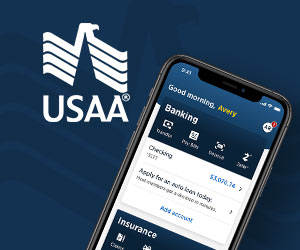What is USAA Car Insurance?
USAA car insurance is a type of auto insurance that is designed to meet the needs and preferences of military members and their families. USAA stands for United Services Automobile Association, and it was founded in 1922 by a group of Army officers who wanted to insure each other’s vehicles. Today, USAA has over 13 million members and offers a range of financial products and services, including banking, investing, retirement, and insurance.
USAA car insurance is known for its competitive rates, award-winning service, and a variety of discounts and benefits for its members. According to a survey, USAA members saved an average of $725 per year when they switched to USAA car insurance. USAA also has the highest score from Net Promoter® for “most likely to recommend” for 13 years in a row.
ALSO READ: Is Car Insurance Required in New Hampshire
How Much Does USAA Car Insurance Cost?

The cost of USAA car insurance depends on several factors, such as your driving record, car’s value, location, deductible amounts, and how much coverage you select for each option. You can get a personalized quote online or by phone to see how much you could save with USAA.
However, to give you an idea, here are some average annual premiums for USAA car insurance in different states, based on data from The Zebra:
- Alabama: $1,057
- Alaska: $1,062
- Arizona: $1,091
- Arkansas: $1,239
- California: $1,211
- Colorado: $1,338
- Connecticut: $1,448
- Delaware: $1,240
- Florida: $1,793
- Georgia: $1,269
- Hawaii: $1,079
- Idaho: $881
- Illinois: $1,120
- Indiana: $957
- Iowa: $872
- Kansas: $1,128
- Kentucky: $1,485
- Louisiana: $2,126
- Maine: $831
- Maryland: $1,372
- Massachusetts: $1,458
- Michigan: $2,368
- Minnesota: $1,131
- Mississippi: $1,326
- Missouri: $1,169
- Montana: $1,237
- Nebraska: $1,040
- Nevada: $1,484
- New Hampshire: $957
- New Jersey: $1,558
- New Mexico: $1,040
- New York: $2,205
- North Carolina: $895
- North Dakota: $994
- Ohio: $858
- Oklahoma: $1,419
- Oregon: $1,224
- Pennsylvania: $1,240
- Rhode Island: $1,918
- South Carolina: $1,353
- South Dakota: $1,039
- Tennessee: $1,091
- Texas: $1,449
- Utah: $1,131
- Vermont: $957
- Virginia: $993
- Washington: $1,131
- West Virginia: $1,240
- Wisconsin: $957
- Wyoming: $1,128
As you can see, the rates vary widely depending on the state, so it’s best to get a quote for your specific situation.
ALSO READ: Top 5 Cheap General Liability Insurance in Florida
What Types of USAA Car Insurance Coverage Are Available?
USAA car insurance offers several types of coverage options that you can customize to suit your needs and budget. Here are some of the most common ones:
- Liability coverage: This helps pay expenses for injuries or deaths in accidents in which you’re found at fault. It also helps pay to repair or replace the other driver’s damaged property. Most states and some lenders require a minimum amount of liability coverage, but you can choose higher limits for more protection.
- Collision coverage: This helps pay for damages to your vehicle from an incident related to driving, such as collisions with stationary objects and other vehicles. This coverage is usually required if you have a loan or lease on your car, but you can also choose it if you want to protect your investment.
- Comprehensive coverage: This helps pay for damages to your vehicle from an incident like hitting an animal, fire, flooding, glass damage, and hail. This coverage is also usually required if you have a loan or lease on your car, but you can also choose it if you want to protect your car from other risks.
- Uninsured and underinsured motorist coverage: This may pay for injuries to you and your passengers, as well as property damage, from an accident caused by a driver with little or no insurance. This coverage is required in some states, but optional in others. It can help you avoid paying out of pocket for medical bills and repairs if you’re involved in a hit-and-run or a collision with an uninsured or underinsured driver.
- Personal injury protection (PIP) or medical payments (MedPay) coverage: These coverages may pay for medical expenses, lost wages, funeral costs, and other expenses for you and your passengers, regardless of who’s at fault in an accident. PIP is required in some states, while MedPay is optional in most states. These coverages can help you cover the gaps in your health insurance or reduce your deductible and copayments.
- Rental reimbursement coverage: This helps pay for a rental car if your car is in the shop for repairs after a covered loss. This coverage is optional, but it can save you money and hassle if you need a temporary replacement vehicle.
- Roadside assistance coverage: This helps pay for towing, battery jump-start, flat tire change, lockout service, and fuel delivery if your car breaks down on the road. This coverage is optional, but it can give you peace of mind and convenience if you encounter a roadside emergency.
ALSO READ: Why is Massachusetts Car Insurance So Expensive?
What Are USAA Car Insurance Policies?
USAA car insurance policies are the contracts that outline the terms and conditions of your coverage, such as the coverages you selected, the limits and deductibles you chose, the premiums you pay, the discounts you qualify for, and the exclusions and limitations that apply. You can access your policy documents online or by mail, and you can review them anytime to understand your rights and responsibilities as a USAA member and policyholder.
USAA car insurance policies are usually issued for six months or one year, depending on your preference and state regulations. You can renew your policy automatically or manually, and you can make changes to your policy anytime, such as adding or removing vehicles and drivers, changing your coverage options, or updating your personal information.
Who Is Eligible for USAA Car Insurance?
USAA car insurance is exclusively available to military members and their families. To be eligible, you must meet one of the following criteria:
- You are an active-duty, retired, or honorably separated officer or enlisted personnel of the U.S. military.
- You are a cadet or midshipman at a U.S. service academy, in an ROTC program, or on delayed entry/enlistment.
- You are a spouse, widow, widower, or former spouse of a USAA member who had USAA auto or property insurance while married.
- You are the child of a USAA member who had or has USAA auto or property insurance.
If you meet any of these criteria, you can apply for USAA membership and USAA car insurance online, by phone, or by mail. You will need to provide proof of your military affiliation, such as your DD Form 214, military orders, or military ID card. You will also need to provide your personal information, such as your name, address, date of birth, and Social Security number.
ALSO READ: Sendero Ideal Care Health Insurance: Everything You Need to Know
How to Qualify for USAA Car Insurance?
To qualify for USAA car insurance, you must meet the eligibility criteria mentioned above, and you must also meet the underwriting requirements of USAA. Underwriting is the process of evaluating your risk profile and determining your premium and coverage options. USAA will consider factors such as your driving record, credit history, vehicle type, location, and usage to determine if you qualify for USAA car insurance and at what rate.
To improve your chances of qualifying for USAA car insurance and getting the best rate possible, you should:
- Maintain a clean driving record, with no accidents, violations, or claims in the past three to five years.
- Improve your credit score, by paying your bills on time, keeping your balances low, and avoiding new debt.
- Choose a safe and reliable vehicle, with good safety ratings, low theft rates, and moderate repair costs.
- Drive less, by using public transportation, carpooling, or working from home when possible.
- Take advantage of discounts and savings, such as bundling your auto and property policies, being a good student, having a safe driving record, and enrolling in USAA SafePilot®.
How to Apply for USAA Car Insurance?
Applying for USAA car insurance is easy and convenient. You can do it online, by phone, or by mail. Here are the steps to follow:
- Visit the USAA website and log in to your account. If you don’t have an account, you can create one by providing your personal and military information, such as your name, address, date of birth, and Social Security number.





